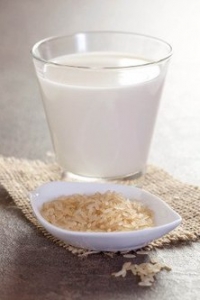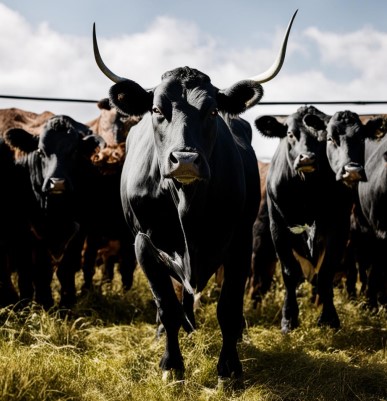Use or harm, food or drink? What do we know about milk?

Photo is illustrative in nature. From open sources.
The source of life, the "white blood", a unique product necessary for our body, which is both drinking and eating - that's what they said about MILK. Today these words are criticized. Milk is a galaxy with more than 400 components and its properties are still unexplored. The results of research on the properties of this product, conducted in different countries, were quite controversial.
We suggest to understand how much milk is necessary for an adult person and what are the damages and benefits from it?
Nutritional value of milk
Of all types of milk in the diet of the population of the Republic of Belarus cow prevails. What is special about it?
Milk is, first of all, a source of proteins.
They are digested faster than other animal proteins. Milk proteins are very diverse in their structure, but most of them are represented:
- Casein is 2.6%,
- with a globulin of 0.5%,
- albuminum-- 0.1%.
- What is valuable about these proteins?
Proteins are known to consist of amino acids. The peculiarity of amino acid composition of milk proteins is high content of lysine and tryptophan. Thanks to this, regular consumption of milk makes it possible to balance the amino acid composition of plant products, in which their content is minimal. An example of such a favourable combination is porridge cooked on milk.
For dairy producers, the quality of casein, which serves as the basis for cheese and cottage cheese production, is of great importance. Milk must be coagulated well from the rennet enzyme, so only high quality milk is used to prepare cheese. Globulin and albumin have unique antibiotic and immune properties. Thus, milk is useful because it can protect the body from infections.
It is the content of this carbohydrate that causes intolerance to milk in adults. Lactose consists of two molecules: glucose and galactose. A special enzyme, lactase, helps to separate this substance into its components. Not all adults have this enzyme. Its activity may decrease with age. As a result, milk sugar does not split into the intestines and causes very unpleasant sensations, such as bloating and diarrhoea. Whereas it used to be thought that an adult with the above symptoms was ill, today such symptoms are a variant of the norm. Only 30% of the world's adult population still has the lactase enzyme active. The largest number of people who continue to work with this enzyme live in the northern part of Europe. For example, in Norway and Denmark 99% of the population is still able to digest milk sugar, in our country - 82% of the population.
The prevalence of lactase deficiency:
Lactase deficiency by region
In the absence of regular consumption of milk in the diet, the activity of this enzyme may also decrease.
When lactose is heated to 100°C, it is modified and lactulose is formed. It is not digested by the human body, as there is no appropriate enzyme, but is a nutrient substrate for normal intestinal microflora. It is lactulose that provides one of the main beneficial properties of milk: it stimulates the growth of bifidobacteria and suppresses the growth of pathogenic bacteria of the intestine.
Fats
The fats in the milk are in the form of an emulsion of small balls. There are 15 billion of them in 1 cm3 of milk. Fatty milk balls include not only triglycerides with different types of fatty acids, mainly saturated, but also mono- and polyunsaturated fatty acids, as well as enzymes, phospholipids, cerebrosides, lipoproteins, sterols, vitamins (A, D, carotene).
Benefits: Dairy fat plays an important energy function in the diet, and the fats also form the taste of the milk product.
Less: A significant disadvantage of such fats for adults is their high atherogenic activity with excessive consumption and lack of polyunsaturated fats in the diet, manifested by the increased risk of cholesterol plaque formation in the walls of blood vessels and the development of atherosclerosis.

Mineral substances
Cow's milk also owes its beneficial properties to the minerals it contains. These substances are in the form of mineral salts, but some of them are associated with proteins, which makes them the most digestible. Potassium, magnesium, calcium, zinc, manganese and copper (macroelements) are present in appreciable quantities, and trace elements, which are more than a dozen and a half, can be found only by spectroscopic analysis. All milk minerals are of great physiological importance for humans.
Due to the high concentration of calcium, this product is indispensable in the diet of both children and adolescents and the elderly. Milk is much higher in calcium absorption than MEAT and fish. This is especially important for children, as it is during this period of time that bones are formed and calcium accumulates in them, the deficit of which will not be able to fill in at an older age.
Unfortunately, the consumption of milk among the population of our country is gradually decreasing, which leads to an increase in fractures in children, even with minor injuries. But in CHINA and Japan, where milk has traditionally not been consumed, special programs have been developed for children - students are given daily additional portions of milk, because the activity of lactase enzyme at this age is still quite high. It is noted that the growth of these nations has increased by almost 10 cm.
Vitamins
Milk is a wonderful product that contains all the vitamins necessary for humans, both fat-soluble and water-soluble. Vitamin D is especially important, which additionally helps to absorb calcium. In case of insufficient content of these two substances in the diet, children develop rickets, so in gray, cloudy days, this product must be present in the diet. Milk is rich in vitamin A, which maintains visual acuity and ensures the beauty and HEALTH of the skin. Folic acid contained in the milk will provide a healthy complexion, maintain muscle tone, especially important for expectant mothers, as it helps to form the NERVOUS SYSTEM of the fetus.
The content of all nutrients depends largely on the season of the year, feed and breed of animal.
Milk from other animals
In addition to cow's milk, people eat milk from goats, sheep, mares, buffalo, yaks, camels, yaks, zebas, deer, donkeys.
All mammals have a different composition of milk in terms of both fat, protein, carbohydrates and the concentration of vitamins and minerals.
Goat milk is the second most frequently consumed milk in Belarus. In terms of chemical composition, it is no worse than cow's milk, and in terms of a number of parameters it even exceeds it. The protein composition of goat milk is similar in composition to that of women. It contains a lot of albumin and globulin. Allergic reactions to it occur less frequently. Goat's milk fats are better absorbed by the body, because the fatty balls are twice as small as in cow's milk. Goat milk contains more vitamins A, C, D and PP. At the moment in the world practice there is a tendency to use goat's milk for creation of children's nutrition, in cheese production and medical nutrition. At the moment there is an attempt to create a new generation of milk - therapeutic. In the course of the Belarusian-Russian project, genetics transplanted human genes into goats. As a result of the experiment, a natural antibiotic of female milk - lactoferin - appeared in goat's milk.
The harm of goat's milk may be associated with a high content of saturated fat, so such milk should be limited in the diet of people suffering from excess body weight, obesity and atherosclerosis. Also, if a person has lactase deficiency, goat's milk, despite its low lactose content, will not be digested and will lead to diarrhoea. When using raw milk from sick animals can cause serious infectious diseases such as tick-borne encephalitis, brucellosis and others.
Should or shouldn't we drink milk?
The benefits of milk for young children are not in doubt. Children under a year old should not be fed cow's milk or milk of other animals as a supplementary food. The period when these foods can be used is individual and depends on the health of the child and should be agreed with the paediatrician.
For adults, milk consumption depends on individual tolerability. If there are no allergic reactions, lactase deficiency, then, of course, it is worth it. Much also depends on the type of drink (read about what happens to milk in this article).
How much milk can you drink to an adult? One glass of milk a day will do the body no harm, but only good.
After all, milk is a great source of calcium, which is well assimilated due to its links with protein, and the presence of vitamin D even more contributes to the absorption of this mineral. It should also be remembered that milk is a source of easily digestible proteins and fats.
If there are young children in the family, parents using milk will be a great example of good eating habits. After all, those traditions, which are laid down in childhood in the family, will certainly affect the behavior of an adult.
Read together with it:
- Борьба с контрабандой, переориентация грузов. Как работают белорусские таможенникиНовости темы В Беларуси 20 сентября отмечают профессиональный праздник таможенники. Оформление грузов, борьба с контрабандой и незаконными схемами поставок товаров - часть их каждодневной работы. Несмотря на непростые условия, санкции и ограничения, таможня продолжает защищать экономические интересы страны. Внедряются новые технологии, улучшается инфраструктура. Вектор на востокКак рассказали в ГТ...
- Почти 40% биржевого экспорта белорусской сельхозпродукции в Россию пришлось на долю Московской областиФото БУТБ 19 сентября, Минск. Московская область стала крупнейшим рынком сбыта продукции агропромышленного комплекса Беларуси среди российских регионов по результатам биржевых торгов, проходивших на Белорусской универсальной товарной бирже в январе - августе 2025 года. Об этом сообщили БЕЛТА в пресс-службе БУТБ.В стоимостном выражении на долю московских компаний пришлось 39% всего объема биржевого...
- Хозяйства Бакчарского района Томской области успешно развивают сельхоздеятельностьЗаместитель губернатора Томской области по агропромышленной политике и природопользованию Михаил Ратнер вместе со специалистами департамента по социально-экономическому развитию села осуществил рабочую поездку в Бакчарский район. Цель визита – мониторинг деятельности сельхозпредприятий и фермерских хозяйств муниципального образования. В рамках программы специалисты посетили АО «Бакчарское», СППК «...
- В Краснооктябрьском сельском поселении введены ограничения из-за бруцеллезаДля предотвращения распространения заболевания и обеспечения безопасности потребителей, настоятельно просят следовать следующим требованиям при продаже мясной продукции: Продавать мясо только с полным комплектом ветеринарных документов, подтверждающих безопасность и происхождение продукции. Соблюдать температурный режим при хранении и транспортировке мяса, поскольку любое отклонение может привести...
- Челябинский фермер погасил долг по ДТП продукцией собственного хозяйстваКак сообщает пресс-служба УФССП по региону, в отношении фермера были применены принудительные меры: ограничение на выезд за границу и арест бытового имущества за неуплату исполнительского сбора. Должник предложил потерпевшему альтернативный способ погашения ущерба — продукцию собственного производства. После того как сторона, получившая ущерб в ДТП, согласилась и получила мясо, она написала заявле...
- Качество куриного мяса в Нижегородской области вызывает опасения: выявлены сальмонеллы и листерииОсновные производители мяса в регионе — Павловская и Линдовская птицефабрики, однако последняя сталкивается с финансовыми трудностями. Григорьев отметил, что в 2022-2024 годах наблюдался рост цен на курятину, что положительно сказалось на модернизации производства. Директор нижегородского филиала ФГБУ «ВНИИЗЖ» Ирина Петрова сообщила, что в 2......
- Новое видео на нашем канале: Мясосально-шёрстная таджикская порода овец – как её разводят в Таджикистане? Наследие Гуляма АлиеваМясосально-шёрстная таджикская порода овец. Разведение и содержание овец в Таджикистане: история породы, экстерьер, кормление, случка, пастбища, ветеринария и племенная работа. Видео снято в Республике Таджикистан, район Рудаки, в коммерческом кооперативе «Эсанбой 1», который занимается разведением мясо-сально-шёрстной таджикской породы овец. В кадре старший научный сотрудник института животноводс...




























































